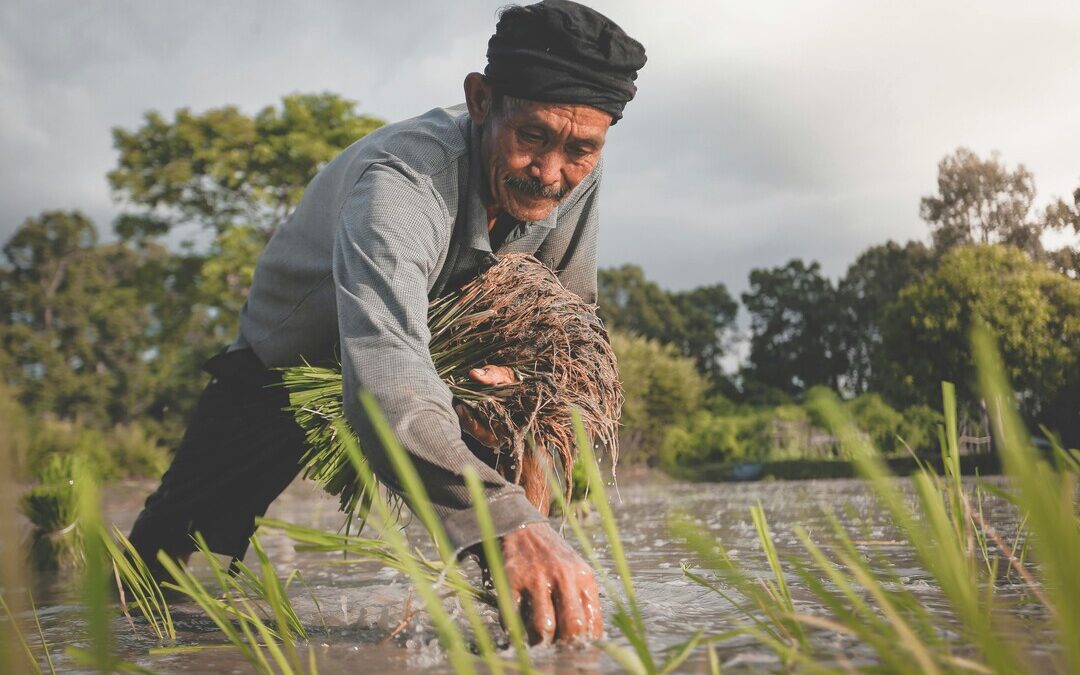BASF Trials Show Rice Methane Cuts of Upto 85% Without Harming Yields
BASF trials show sustainable rice farming can cut emissions sharply while protecting yields and farmer livelihoods.
BASF, the world’s largest chemical company, said on Monday that its latest global carbon field trials showed rice farming emissions could drop by as much as 85 percent without hurting yields.
The finding marks a breakthrough for one of the most greenhouse gas-intensive crops.
The two-year study in the Philippines found that alternate wetting and drying, or AWD, irrigation cut methane emissions by up to 60 percent.
When combined with post-harvest straw removal, the reduction in greenhouse gas intensity reached 85 percent. Rice farming yields in these plots rose by as much as 1.2 tons per hectare. The gains came even under typhoon-affected conditions.
Marko Grozdanovic, BASF’s senior vice president for global strategic marketing and sustainability, stated that the results demonstrated that climate-smart practices can be implemented at scale.
“Our findings confirm that a 30 percent reduction in greenhouse gas intensity in rice is possible without jeopardizing yield or farmer income,” he said in the report.
Validation of Tools and Methods
For the first time, greenhouse gas measurements from field plots were compared with BASF’s AgBalance life cycle model.
Results showed a strong correlation. The app proved to be a credible and resource-efficient tool for farmers and value chain partners. The validation is important because field-based gas flux monitoring is both costly and impractical for smallholders.
The trials also answered a key concern: whether AWD, by drying paddies, would increase weed pressure or drought stress. While these risks exist, the study found consistent yield maintenance or gains across both wet and dry seasons.
Global Carbon Farming Integration
The rice trials are part of BASF’s broader Global Carbon Farming Program. Launched in 2021, the program targets emission cuts in wheat, corn, soy, canola and rice farming. Partnerships with the International Rice Research Institute in the Philippines and NEWGREEN in Japan are linking science-based practices to carbon markets.
“These results are not just science—they are a pathway to new revenue streams,” Grozdanovic said. “By validating carbon reductions, we enable farmers to access credits and strengthen value chains.”
Trade-Offs and Policy Barriers
The report noted limitations to straw removal, which reduced methane emissions by more than 90 percent in some cases. Certification rules under Verra’s VM0051 protocol may block farmers from removing straw if they have historically incorporated it.
Removing straw can also reduce nutrient recycling and soil health. These trade-offs need careful management.
Nitrous oxide emissions, another greenhouse gas, showed mixed results. Slight increases were seen during the wet season. However, levels remained significantly lower than those of methane.
Scaling Climate-Smart Practices
Direct seeded rice was tested alongside AWD to address labor and water shortages. By reducing water use and streamlining operations, DSR achieved both environmental and economic benefits. In Japan, trials combining DSR with water-saving techniques are helping tackle aging farm populations and infrastructure gaps.
Global expansion is underway. BASF has started new trials with India’s Central Rice Research Institute and is running field studies in Italy. Results will help refine practices while aligning with certification standards such as Verra’s Verified Carbon Standard and the Gold Standard.
Building Farmer Trust
The IRRI endorsed the Philippine results, confirming the validity of the methods. Adoption will still depend on incentives to offset costs. BASF said tools like AgBalance and its digital xarvio Field Manager can help farmers measure, monitor, and monetize sustainability gains.
“Lasting climate impact demands a systems-level approach,” Grozdanovic said. “That means researchers, farmers, and value chain partners working together to make sustainability pay.”
Rice feeds more than half the global population and employs nearly a billion people. Yet it accounts for about 10 percent of global methane emissions.
In Japan, paddies contribute around 40 percent of the nation’s methane output. With global demand rising as the population nears 10 billion by 2050, cutting rice farming’s climate footprint is critical.
The report concluded that proven practices can deliver both resilience and productivity, even under extreme weather. Scaling will require incentives, transparent carbon markets, and flexible certification standards.
Also Read:
Boomitra’s Carbon Farming Project in India Wins Verra Registration
Nirmal Menon
Related posts

Subscribe
Error: Contact form not found.


